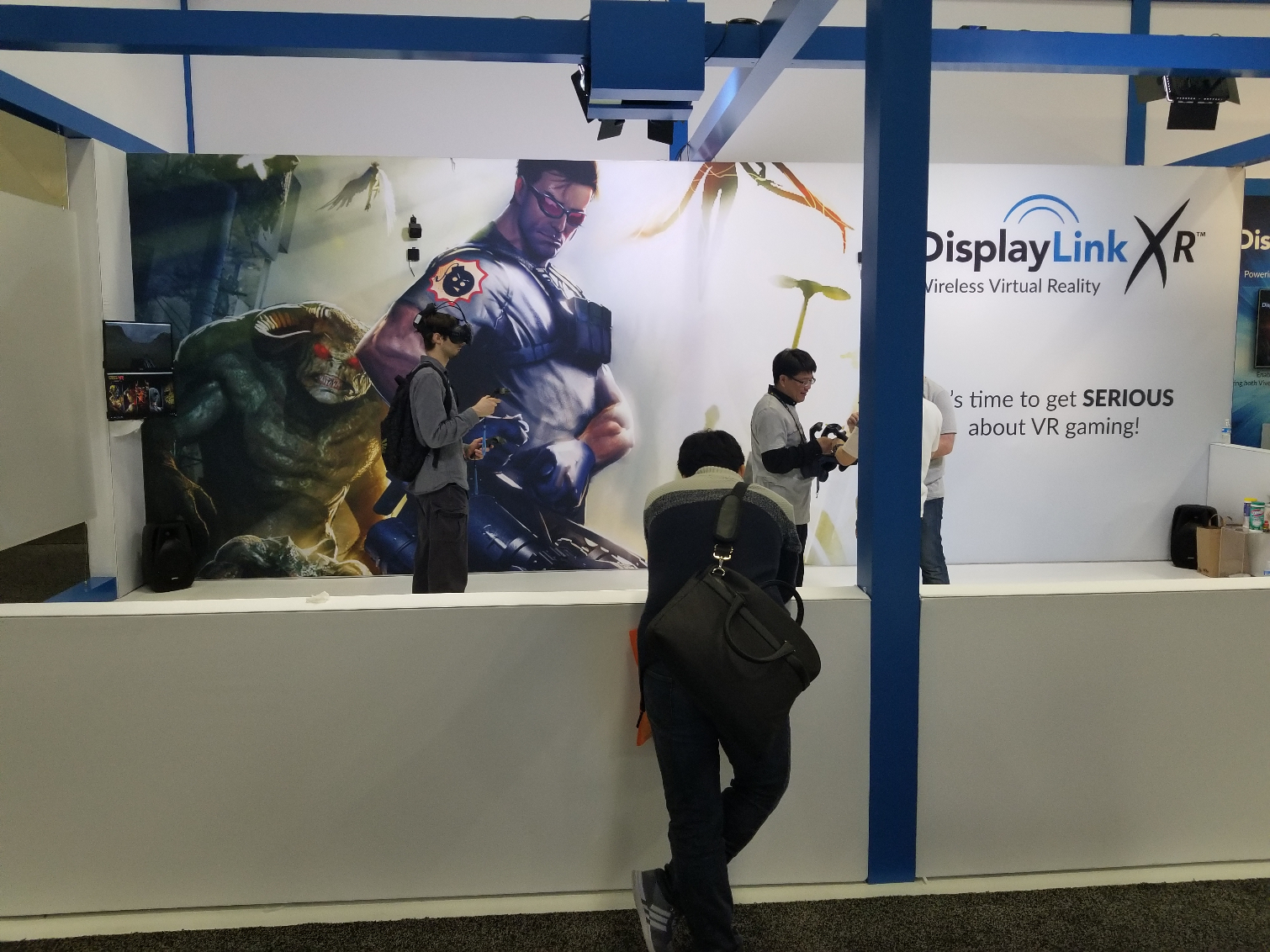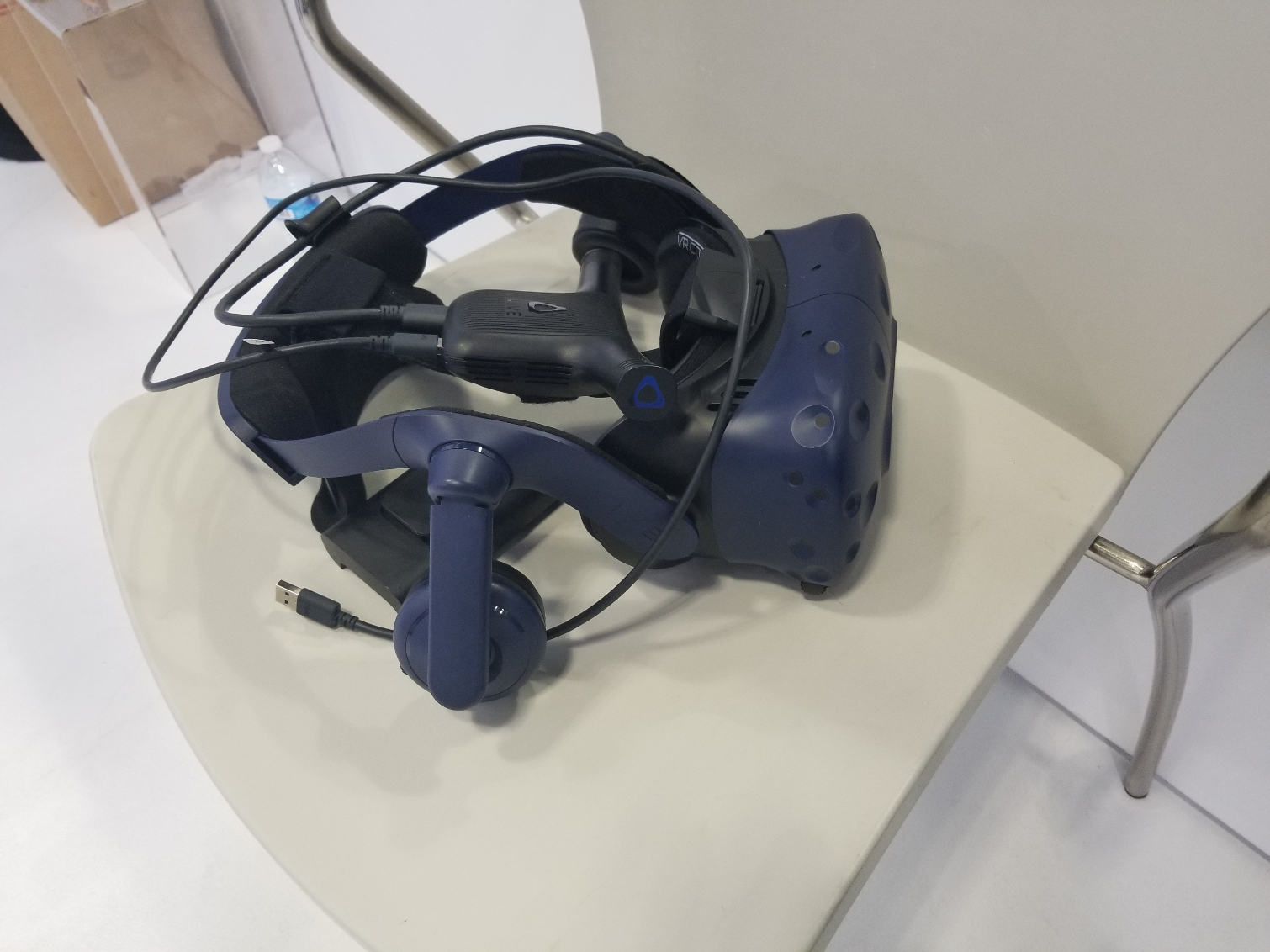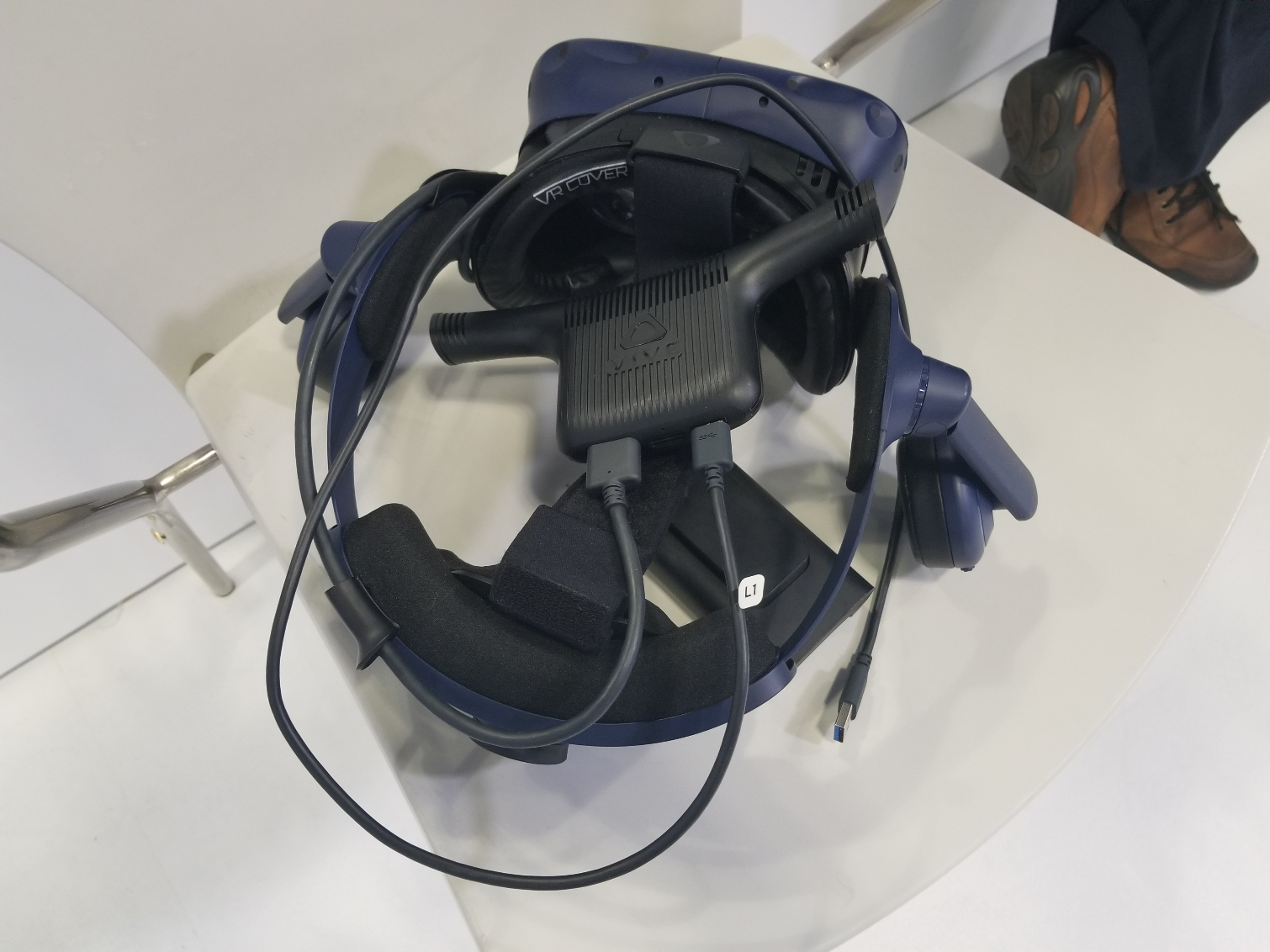DisplayLink Reveals New Details About Wireless VR Solution
Last week at GDC, DisplayLink was demonstrating the capabilities of its wireless technology in the upcoming HTC Vive Wireless Adapter. We stopped by the booth and took a few pictures, but we weren’t able to secure a demo. The DisplayLink representative we spoke to didn’t have much to say about its technology that we didn’t already write about last year, and they didn’t have anything to say about HTC’s adapter that we didn’t already know.
However, in an interview with Tested.com’s Norman Chan, Andy Davis, DisplayLink’s Marketing Director, revealed several details about the wireless system, including information about a new Intel-developed antenna system.
HTC’s Vive Wireless Adapter uses a combination of DisplayLink’s wireless video technology and Intel’s WiGig technology. That part isn’t news--we’ve known since Computex last year that these three companies are working together to create a wireless solution. However, they haven’t spoken much about the finer details of the system.
DisplayLink’s wireless XR platform is a combination of hardware and software that enables latency-free transmission of VR data signals. The wireless system uses DisplayLink’s DL8020 chips, which are capable of driving resolutions up to 4K. Davis also said that the system currently operates at 90Hz, but there is “loads of space” for higher refresh rate displays in the future. The DL8020 chips can interface with DisplayPort and HDMI (HTC’s solution offers both to support the Vive and Vive Pro HMDs), so companies can adapt it for any HMD.
Davis also explained that the DisplayLink wireless system does not restrict any of the features or the Vive headset. TPCast already offers a wireless solution, but the current generation device doesn’t support the microphone. DisplayLink’s system handles everything from the video signal, the audio signal, the sensor tracking data, and the microphone. It even supports the chaperone camera.
Intel’s WiGig technology handles the wireless data transmission via a 60GHz direct line-of-sight signal. WiGig technology isn’t new, but Intel repurposed the technology for VR, which required redesigning the hardware. Davis explained that Intel created a new antenna system for wireless VR that enables an unobstructed line of sight to the head-mounted wireless VR adapter. The new WiGig antenna features 2m tether cable, which enables you to install it high on your wall or a stand.
WiGig technology offers high-bandwidth data transmission, but it isn’t designed to communicate with rapidly moving objects. Stationary devices can communicate over WiGig with predictable, steady bandwidth levels, but moving devices suffer from fluctuating signal strength. Davis described WiGig as being like a laser pointer that you can point directly, whereas he said WiFi is more like a torch that offers wide, imprecise coverage.
Get Tom's Hardware's best news and in-depth reviews, straight to your inbox.
DisplayLink uses software codec to overcome the fluctuating bandwidth problem. Davis said that DisplayLink’s compression algorithm could dynamically adjust and compress the video signal in real-time to keep the signal within the bandwidth constraints at any given moment. The software accounts for color space, moving and stationary features, and image quality levels and pushes out the highest quality signal that it can. “The goal is to make it invisible to the user,” Davis told Chan.
A Closer Look At The Adapter
We didn’t get a chance to try the Vive wireless adapter at GDC, but we did get a closer look at the hardware, which shed some light on some of its features.
The unit attaches to the top Velcro strap of the Vive or Vive Pro HMD and features two antennas that stick on either side. The ends of the antennas feature Vive logos that illuminate when the device is powered up.
We don’t know if the cables are included, but the headset we looked at featured a short data cable that tethers the receiver to the HMD. The Vive Pro has a proprietary data cable, which leads us to believe the short cable would come with the wireless adapter.
The adapter includes HDMI and DisplayPort interfaces so that you can plug either headset into the unit. With both connections present, it wouldn’t be difficult for HTC to add support for future HMDs either.
The receiver also features a USB 3.0 port, which is used to power the device. It’s not present in our pictures, but the USB cord attaches to a battery pack, which you can strap to your belt or put in your pocket while playing.
We’re still not sure when HTC plans to release the Vive Wireless Adapter, but we expect to learn more about it in the coming months. HTC said the device would be available this summer. We’re eager to get our hands on one to run it through its paces. Though, we’re not so eager to find out the price. With HTC’s recent track record of setting high prices for VR hardware, we don’t expect the wireless system to carry a bargain price tag.
Update, 4/4/18, 2:30pm PT: Modified some language that unfairly portrayed DisplayLink's role in meeting with us at GDC.
Kevin Carbotte is a contributing writer for Tom's Hardware who primarily covers VR and AR hardware. He has been writing for us for more than four years.



